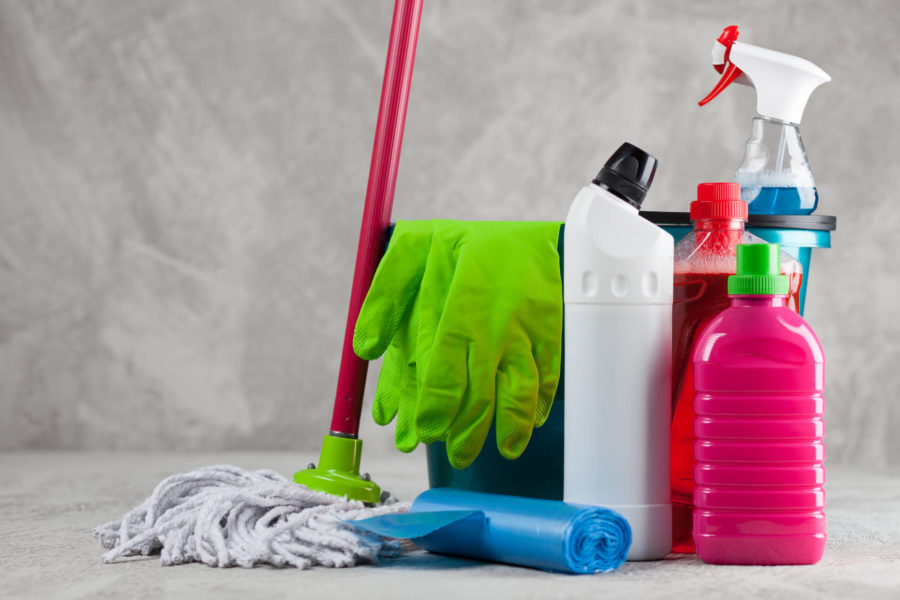

How to Help a Hoarder Move – Compassionate Strategies for a Smooth Transition
Posted in Coping With Relocation,Planning the Move on May 16, 2024
Moving cross country can be challenging for hoarders, as they often have emotional attachments to their belongings. This guide on how to help a hoarder move will provide compassionate strategies to facilitate a smooth transition. Learn to approach the situation with sensitivity, create an effective plan, and use practical steps to ensure a respectful and stress-free long-distance moving process.
How to Help a Hoarder Move?
Helping a hoarder move starts by establishing trust and understanding their emotional attachment to their belongings. Create a moving binder where you’ll include all the relocation tasks – including sorting items with respect and patience and deciding what to keep, donate, or discard.
Enlist the help of a professional organizer or therapist experienced in hoarding behavior to provide guidance and emotional support. Encourage the hoarder to participate actively in the decision-making process, ensuring they feel in control – this will help reduce relocation stress. Focus on small, manageable tasks on the to-do list to prevent overwhelm and maintain a positive, supportive attitude throughout relocation to a new state or city.
Understanding Hoarding Is Necessary for Providing Adequate Emotional Support During Moving
Understanding hoarding disorder is crucial when providing emotional support to someone during their relocation to a new home. Hoarding is not merely a matter of being disorganized – it is deeply connected to an individual’s emotional well-being. Recognizing the psychological ties hoarders have to their possessions can guide friends, family, or professionals in offering the right kind of support.
This support should be empathetic and patient, focusing on building trust and making the individual feel safe and understood during the stressful transition of moving. Remember, a hoarder may fear moving – they might think that relocating can be traumatic for them.
What Is a Hoarding Disorder?
Hoarding disorder is characterized by persistent difficulty parting with or discarding possessions, no matter their actual value. This condition leads to clutter that disrupts living spaces and daily functioning.
Individuals with hoarding disorder often feel a perceived need to save items and experience distress at the thought of getting rid of things. The disorder can isolate them from others, create hazardous living conditions, and result in significant distress or impairment.
Psychological Impacts of Hoarding on Individuals
The psychological impacts of hoarding on individuals are profound and multifaceted. Hoarding can lead to severe anxiety, depression, and social isolation. The compulsion to hoard often stems from an attempt to manage emotional pain, with possessions providing a false sense of security. This behavior can severely affect an individual’s quality of life, leading to strained relationships and avoiding inviting others into their home, further deepening their isolation and emotional distress.

Compassionate Moving Help – Preparing to Assist in the Upcoming Relocation
When preparing to help a hoarder relocate to a new city, it’s essential to approach the task with compassion and understanding. Once you learn about the psychological aspects of hoarding and recognize the emotional attachments to possessions, you can start preparing for relocation. It’s important to plan meticulously, considering the emotional and physical tasks involved. Be sure to start well in advance to avoid last-minute hustle.
Assembling a supportive team, possibly including professional cleaners, organizers, or mental health professionals, can be invaluable. Prior to relocation, discuss the process in detail with the hoarder, ensuring they feel part of the planning and decision-making. This helps reduce anxiety about relocating and resistance when the time to move approaches.
Establishing Trust and Communication Is Crucial
Trust and open communication form the cornerstone of assisting someone with a hoarding disorder in relocating. Start by talking about their feelings and concerns about moving and their attachment to their belongings. It’s crucial to listen actively and acknowledge their fears without judgment.
Establishing this trust will facilitate smoother interactions and make it easier to discuss what items to keep and what to part with. Ensure that communication is ongoing and consistent, providing reassurance and support throughout the relocation process, thus strengthening the trust and making the transition as smooth as possible.
It’s Recommended to Set Realistic Goals for the Move
Setting realistic goals is critical when helping a hoarder. The process can be overwhelming, so it’s important to break down the relocation into manageable stages. Begin by setting small, achievable goals, such as clearing a particular area or sorting through a category of items (like clothes or important documents) within a specific timeframe.
Celebrate small victories to provide positive reinforcement. Avoid setting tight deadlines that could add unnecessary stress – instead, allow for flexibility in the timeline to accommodate the hoarder’s pace of decision-making and adjustment. This approach helps maintain momentum without overwhelming the individual, making the process less daunting.

Organizing and Decluttering Before Relocation
Preparing for this huge step involves significant organizing and decluttering. Start by assessing the volume of items and identifying different categories such as necessities, keepsakes, donations, and trash. Implement a systematic approach where each room is tackled individually, sorting items into designated areas. Use clear labeling systems and create a detailed household inventory list to track progress.
Strategies for Sorting and Organizing Hoarder’s Belongings
When sorting and organizing a hoarder’s belongings, it’s crucial to use a compassionate and structured strategy. Begin with less emotionally charged items to gradually build the hoarder’s confidence in making decisions. Employ the three-box method – one box for items to keep, one for donations, and one for disposal.
Encourage the hoarder to make decisions on each item, providing gentle guidance but allowing them the final say. This strategy respects their feelings and promotes a sense of control and accomplishment.
Decluttering Tips for Hoarders – Deciding What to Keep, Donate, or Discard
Relocation tips for decluttering include asking questions like, “When was the last time you used this?” or “Does this item bring you joy or serve a practical purpose?” Encourage them to consider the benefits of space and the functionality of their home without these items.
One of the top hoarding disorder moving tips for difficult decisions is to suggest a “maybe” box that can be revisited later, reducing the immediate pressure of a final decision. Hoarding cleanup services might be required after decluttering is done.
Handling Sensitive Situations With Empathy
During the decluttering process, you may encounter highly sensitive situations where a hoarder is reluctant or distressed about parting with items. In these moments, it’s important to pause and offer empathy. Acknowledge their feelings, reassure them of their control over the situation, and provide emotional support. Sometimes, just being heard can ease their distress and facilitate cooperation.

The Logistics of Relocating and Packing Strategies for Hoarders
Begin by packing items that are not essential for daily living. Proceed with those that a hoarder needs on a daily basis – those should be packed last and unpacked first. Use a color-coded system to organize boxes according to room and importance. Packing should be done systematically, with each item assessed and placed with care to prevent overwhelm.
Custom Packaging Tips for Hoarders
As certain items have significant emotional value for hoarders, they require specialized packaging solutions to ensure their safe transport. Use sturdy boxes and plenty of protective wrapping materials, such as bubble wrap or packing paper. Don’t forget padding materials such as packing peanuts, especially for fragile items. For valuable items, consider booking packing assistance from professionals – our team at Cross Country Movers can help with this.
Ensuring Safety and Cleanliness During Relocation Preparations
Safety and cleanliness are critical during the relocation preparations for hoarders. Start by clearing pathways in the home to avoid trips and falls. Regularly dispose of trash and debris to minimize clutter and potential hazards.
Use dust masks and gloves to protect against allergens and bacteria, especially when sorting through long-stored items. Regularly sanitize areas that have been cleared, and ensure that any hazardous materials are safely removed according to local regulations.

During the Move – Managing Stress and Emotions
Moving day can be particularly stressful for a hoarder, as it involves facing significant changes and parting with their home. It’s crucial to manage stress and emotions proactively. Maintain open lines of communication, allowing the hoarder to express concerns and emotions.
Offer consistent reassurance and remind them of the positive aspects of this relocation. Keeping a calm and steady pace throughout the moving process helps manage the emotional climate, making the transition less daunting.
Moving Day for Hoarders – How Can You Support Them?
Be physically present to assist with last-minute packing and decision-making. Use a gentle, affirming approach to encourage progress, even if it’s slow. It’s helpful to remind them of the preparations and discussions that took place beforehand, reinforcing the plan and their decisions. Keep distractions to a minimum and focus on one task at a time to prevent them from feeling overwhelmed.
Techniques to Maintain Calm and Focused
Maintaining calm and focus during relocation requires deliberate techniques and strategies. Start by setting a relaxed yet structured schedule that allows for regular breaks and moments of respite. Practice deep-breathing exercises or brief meditations with the hoarder to reduce anxiety.
Encourage them to envision the benefits of relocating to their new space, using visualization as a tool to shift focus to the positive outcomes awaiting them. By fostering a tranquil environment, you help keep the moving process controlled and focused, benefiting everyone involved.

Settling in and Organizing a Hoarder’s Home
Settling into and organizing a new home for a hoarder involves ongoing support to ensure the transition is both smooth and sustainable. Successfully transitioning involves more than just physical relocation – it requires emotional adaptation and a sustainable organization system.
Start the unpacking after relocation by placing the most essential items first, ensuring they are easily accessible and organized. Gradually address the rest, maintaining a sense of order and preventing clutter from accumulating again. This method helps the hoarder feel more in control and less overwhelmed.
Transition Tips for a Hoarder and Continuous Support After the Move
To support this shift effectively, it’s crucial to implement strategies that not only help maintain the organization of the new space but also address the emotional needs of the individual. Here are some key actions that can facilitate a smoother adjustment:
- Establish a straightforward daily routine to help the hoarder adjust to the new environment.
- Schedule regular check-ins to offer emotional support and discuss any challenges with maintaining the organization.
- Encourage gradual decluttering by focusing on discarding duplicates or unnecessary items over time.
- Consider ongoing psychological support for hoarders to address underlying emotional or psychological issues related to hoarding.
Cross Country Movers Is Your Go-To Relocation Partner – We Can Make Any Move a Success
Cross Country Movers is your premier relocation partner, dedicated to transforming any relocation into a resounding success. Whether you’re moving across the country with family or relocating your business to a new city, our experienced team of long-distance movers is equipped to handle every aspect of your transition.
We pride ourselves on our meticulous planning, secure packing, and timely delivery, ensuring your belongings are moved safely and smoothly. With our expert cross-country moving services and customer-first approach, you can rest assured that your experience will be seamless and stress-free. Contact us today – choose Cross Country Movers and make your next move the best one yet!






